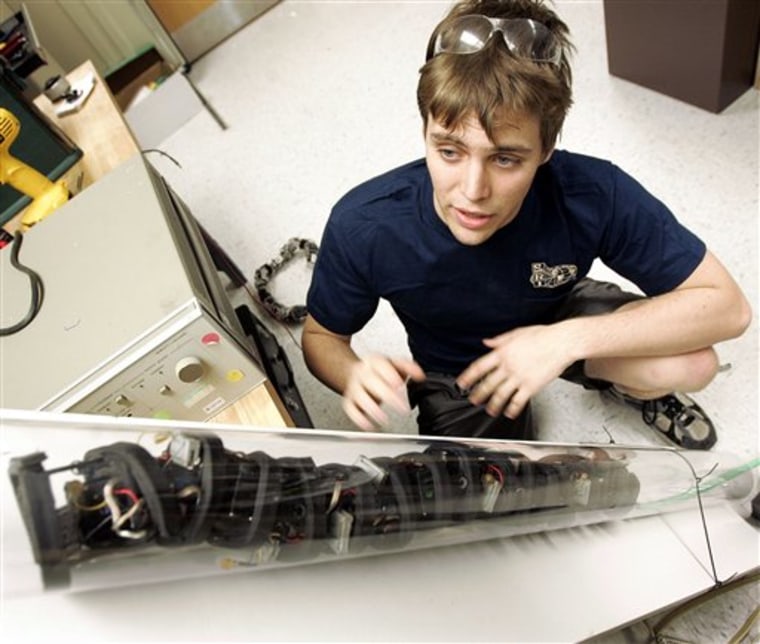For most people, snakes seem unpleasant or even threatening. But Howie Choset sees in their delicate movements a way to save lives.
The Carnegie Mellon University professor has spent years developing snake-like robots he hopes will eventually slither through collapsed buildings in search of trapped victims. In recent weeks, Choset and some of his students got the remote-controlled devices to climb up and around pipes.
Rescue workers say such robots would help locate survivors.
"Right now, the way to get to these trapped survivors is to pull the rubble out one rock at a time," Choset said. "So our dream is to have the snake robot thread through this collapsed rubble and get to victims more quickly."
Dan Kara, whose Robotics Trends company publishes an online industry magazine and runs robotics trade shows, said other snakelike robots are being developed, mainly at universities, but he didn't know of one that could climb pipes.
The Carnegie Mellon machines are designed to carry cameras and electronic sensors and can be controlled with a joystick. They wriggle with the help of small electric motors, or servos, commonly used by hobbyists in model airplanes. Built from lightweight aluminum or plastic, the robots are about the size of a human arm or smaller.
Sam Stover, a search team manager with the Federal Emergency Management Agency, said snake-type robots would offer greater mobility than equipment currently available, such as cameras attached to extendable poles. Although sniffer dogs are better, he said, they can only be used effectively when workers have access to damaged buildings.
Choset said the robots may not be ready for use for another five to 10 years, depending on funding. For now, he and his team plan to continue testing the machines at mock disaster sites around the country.
